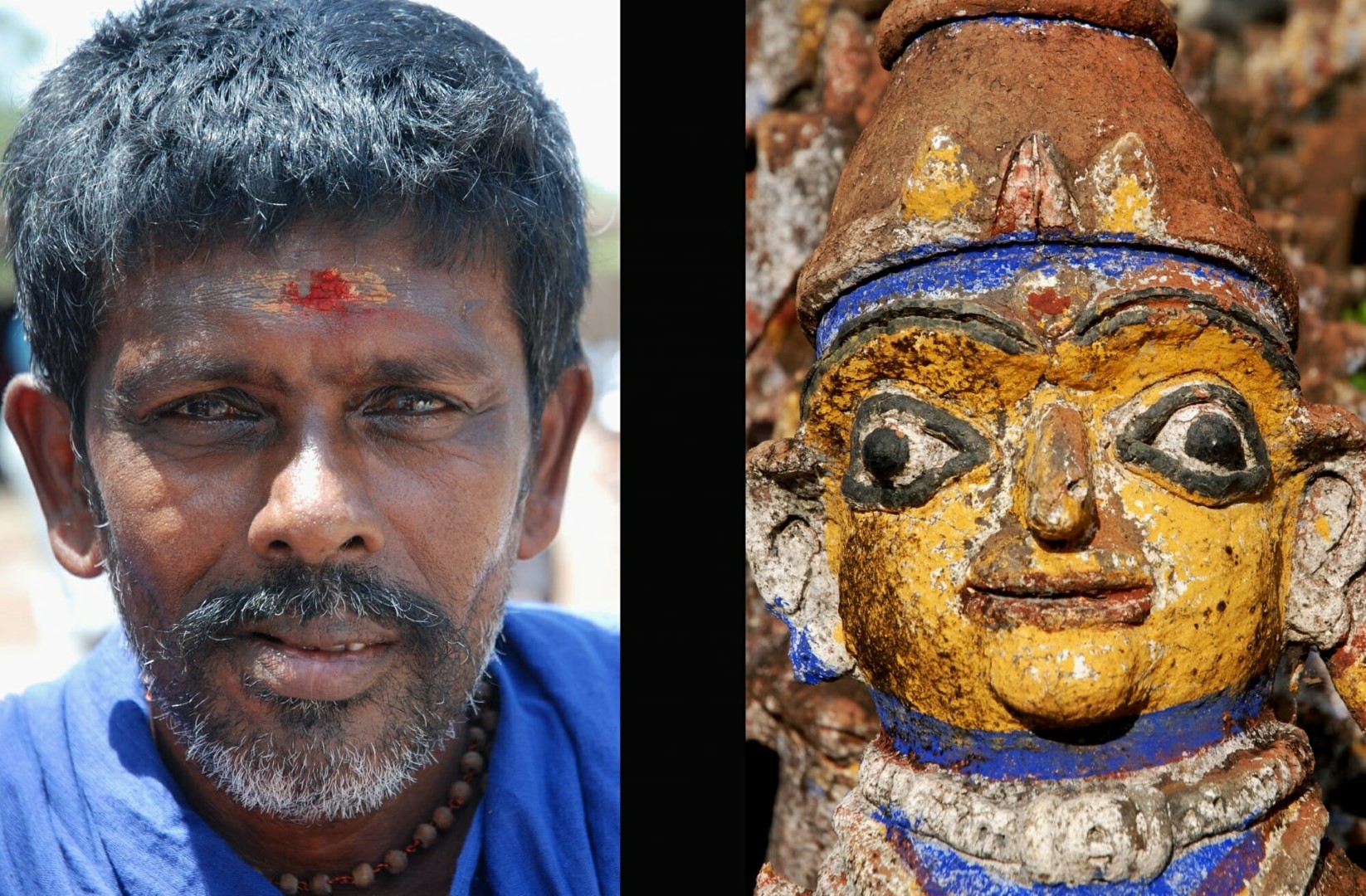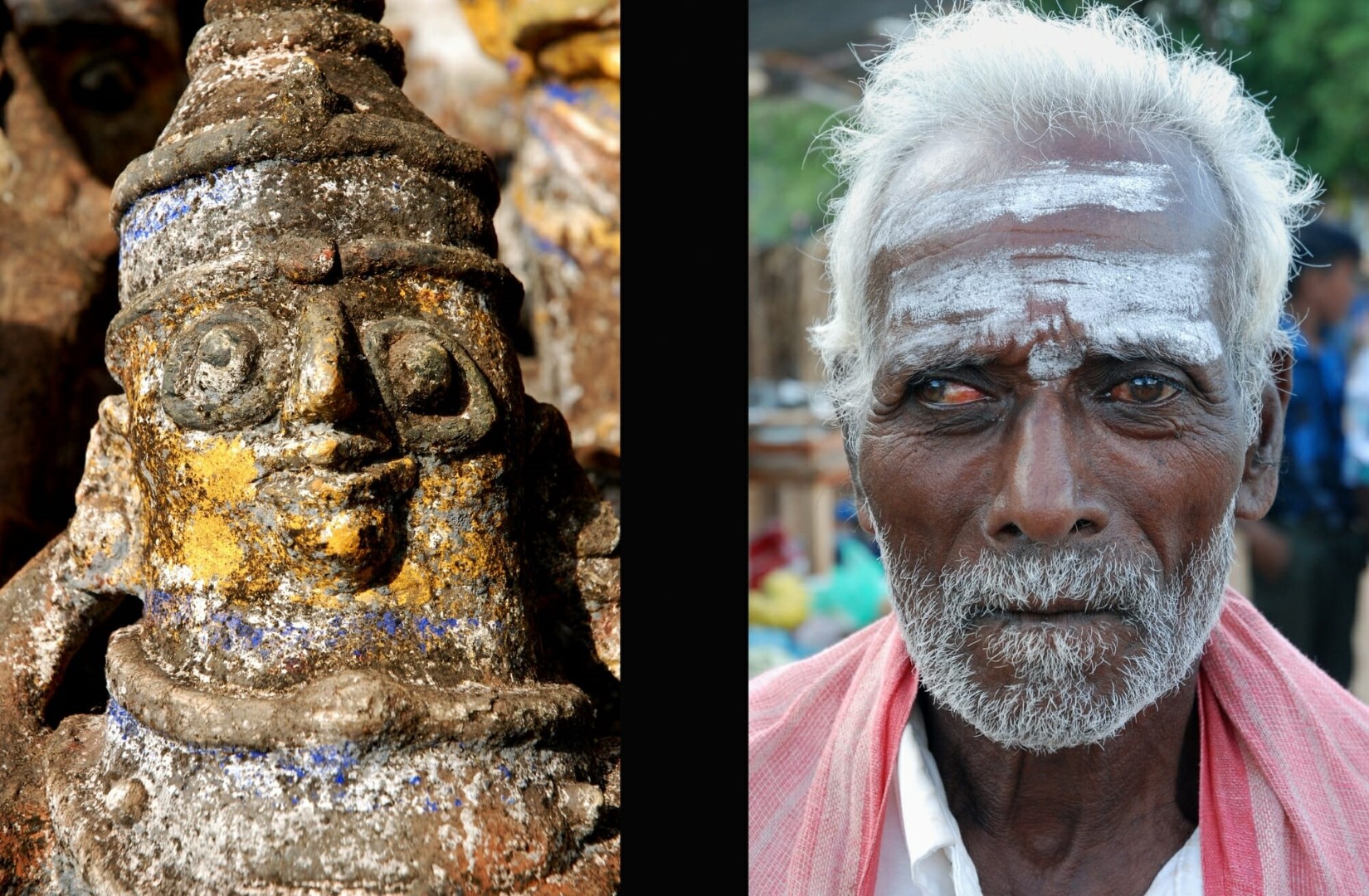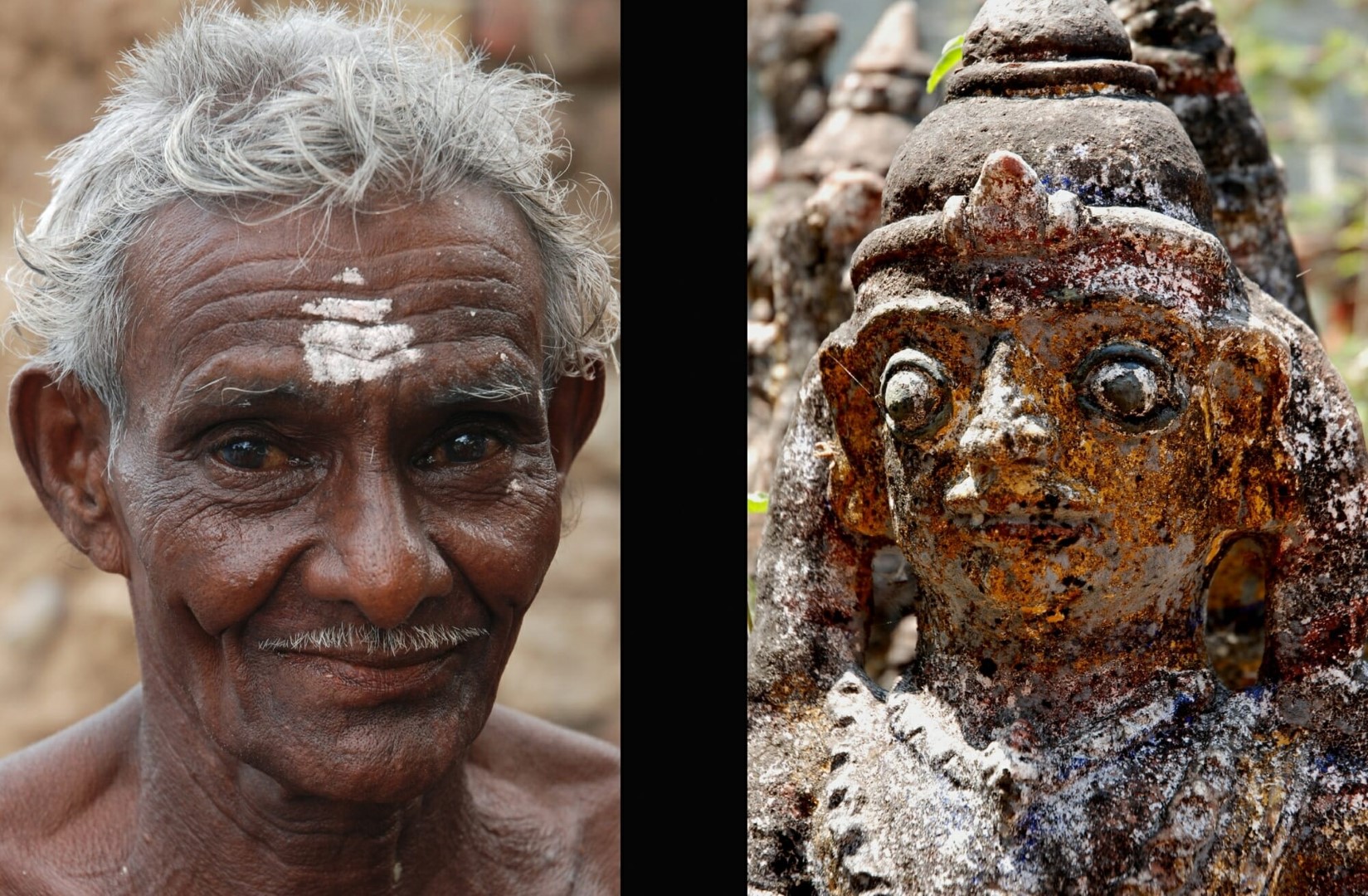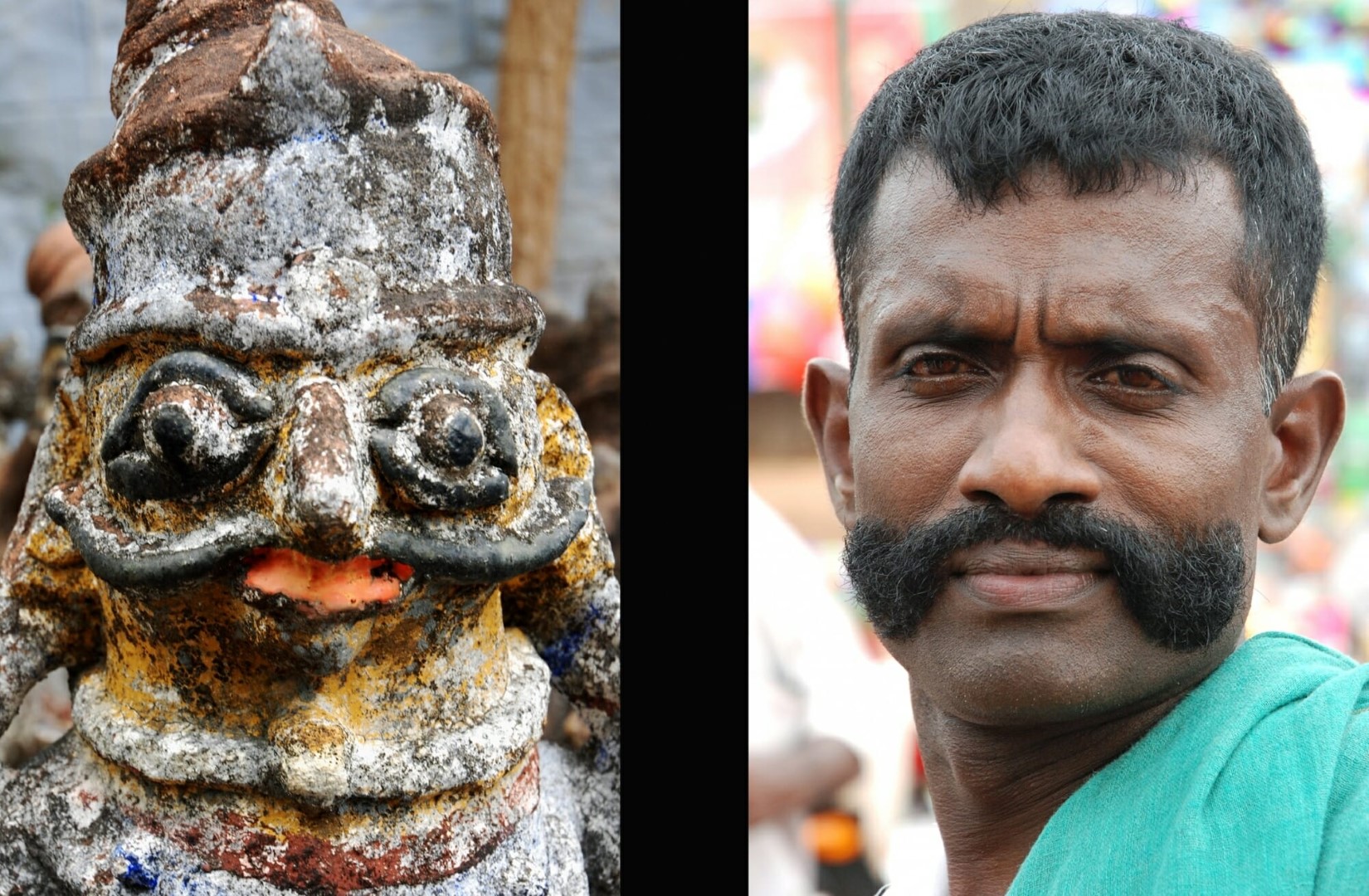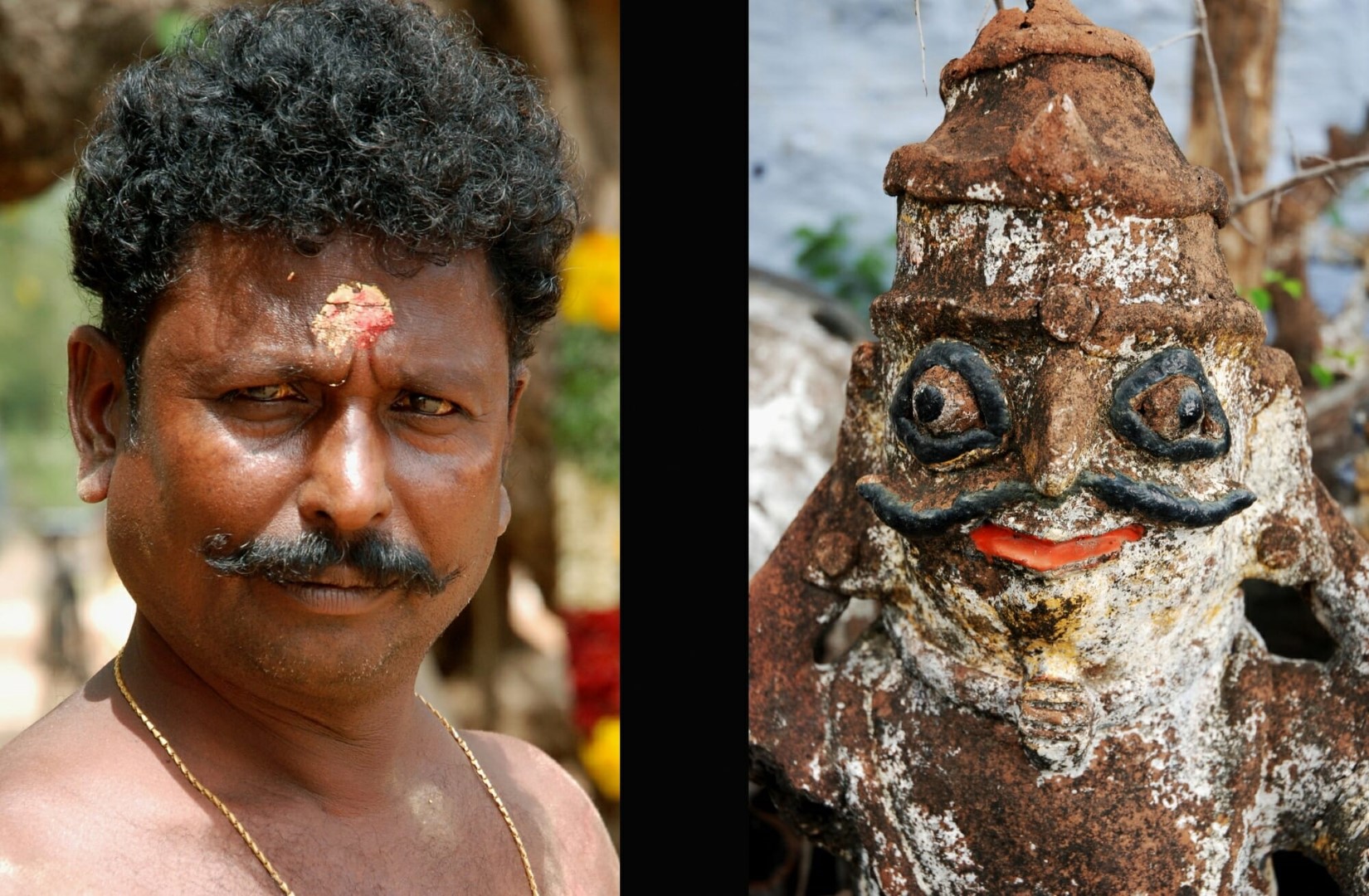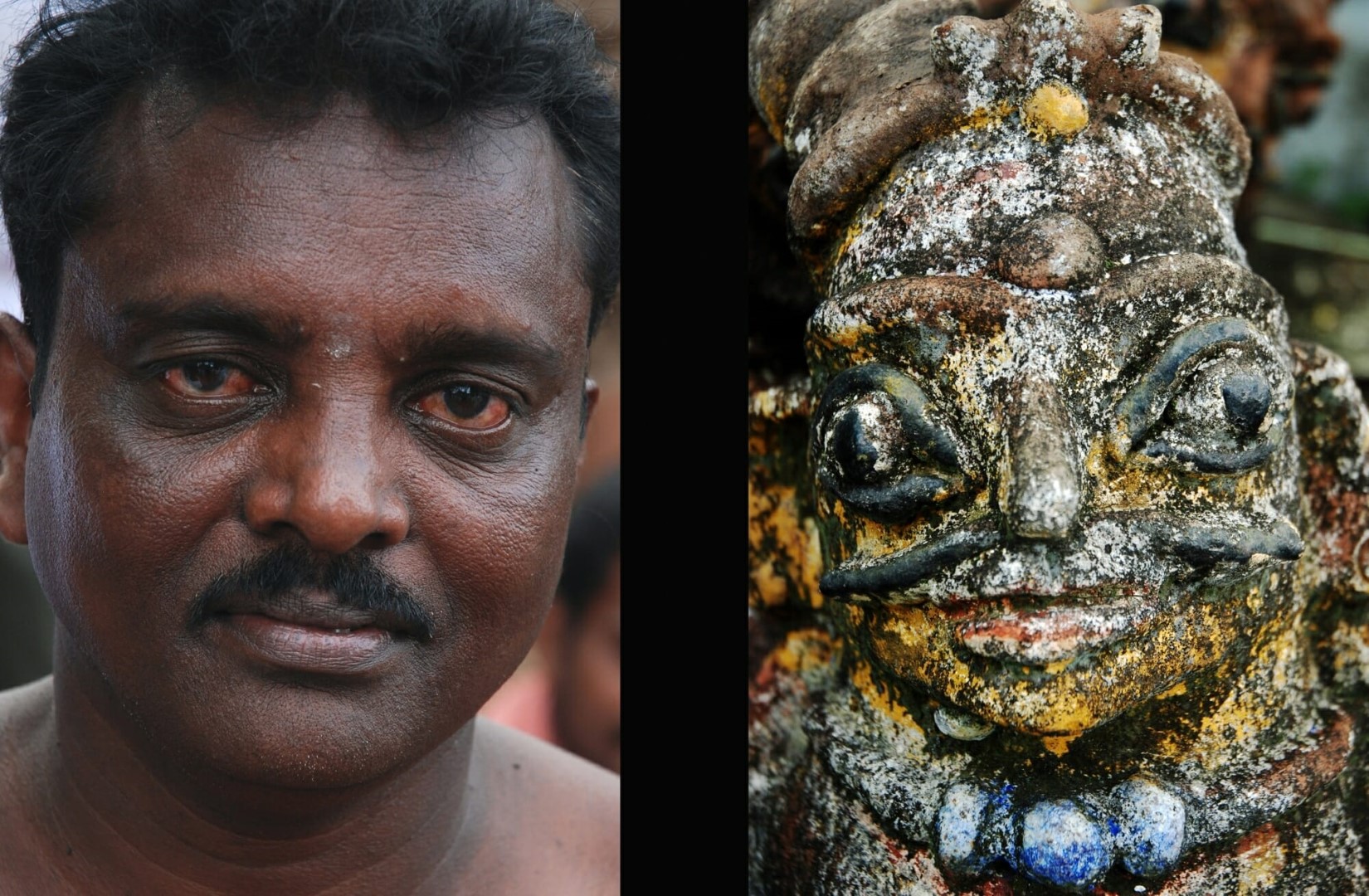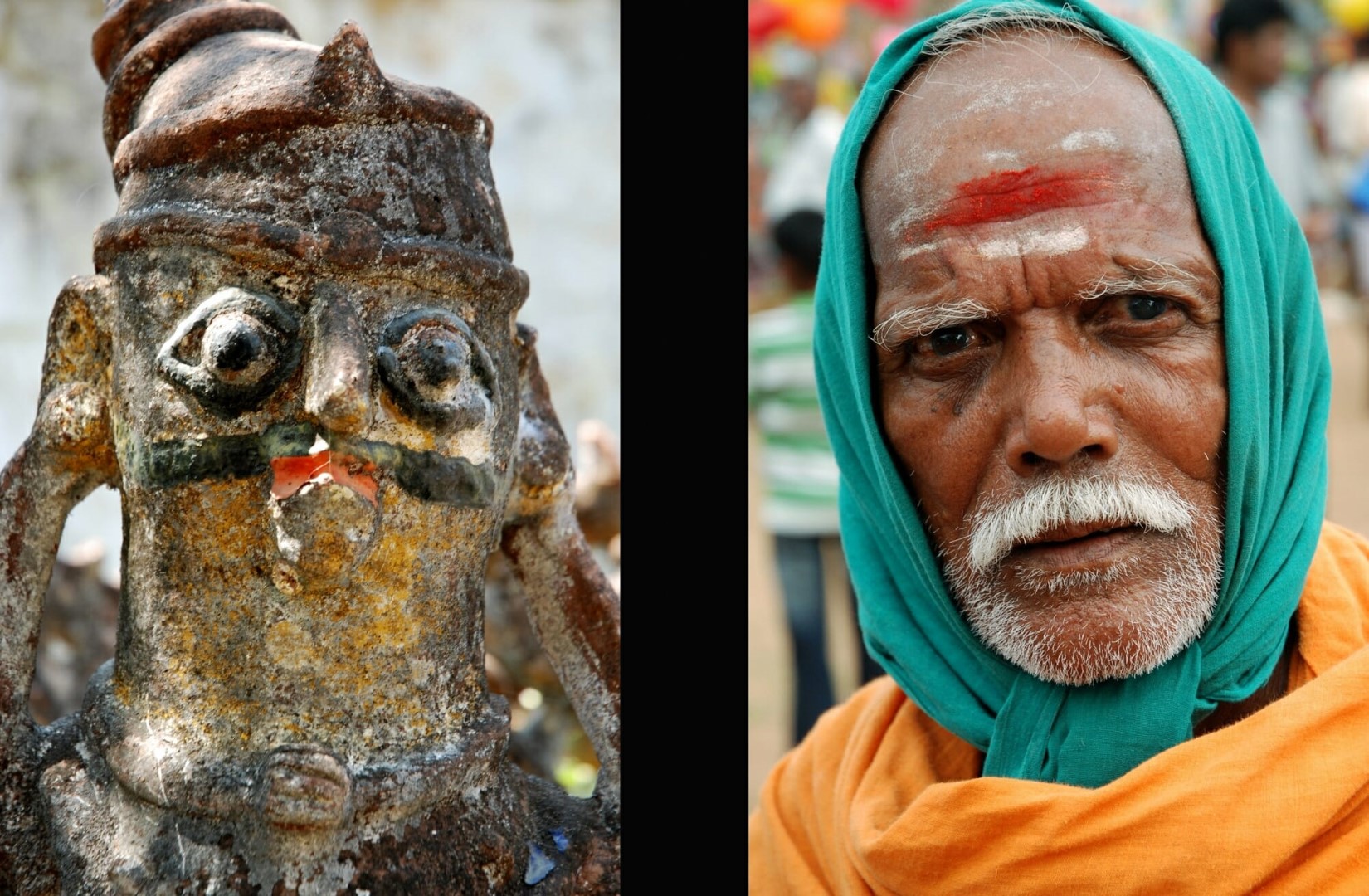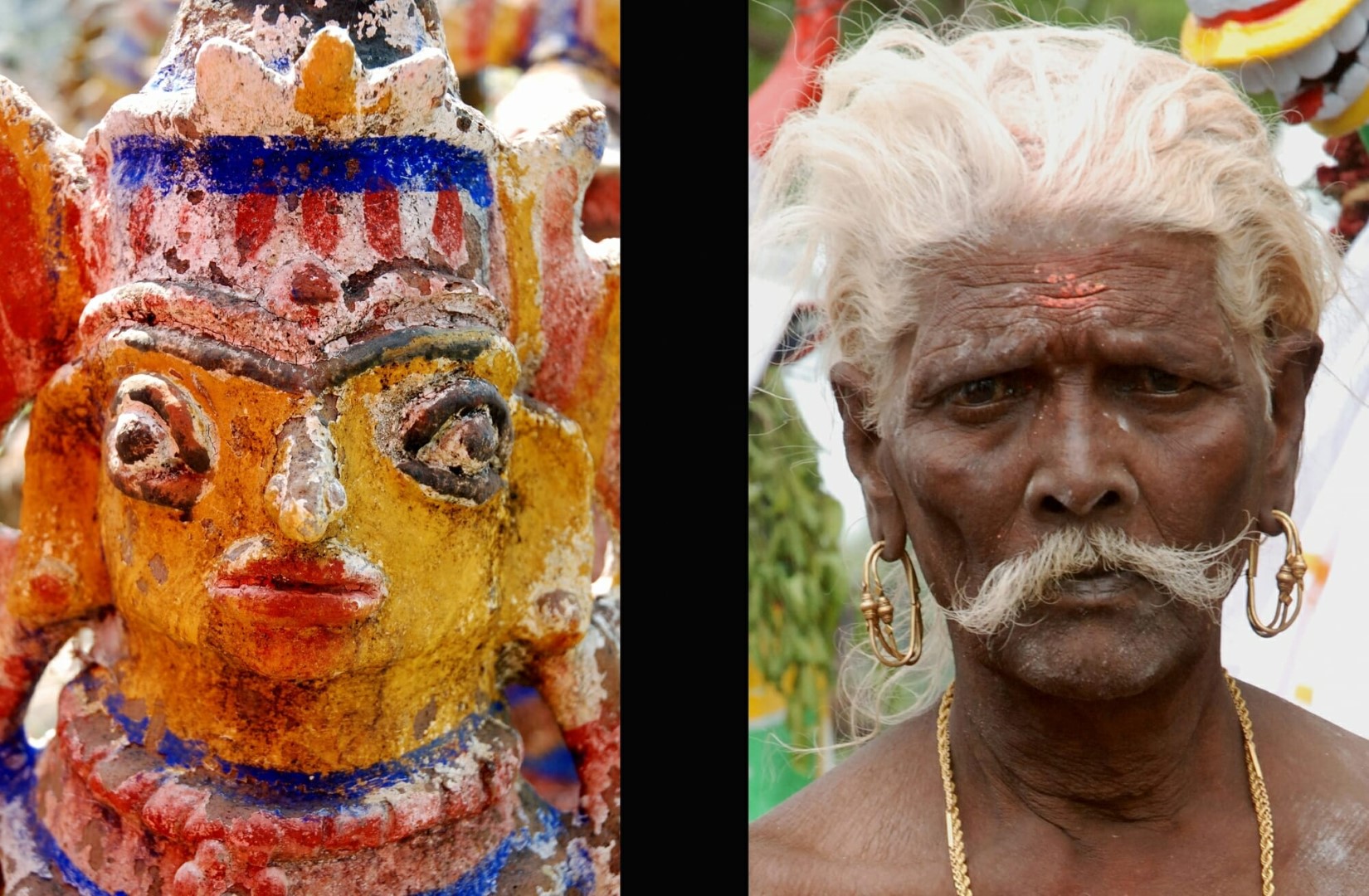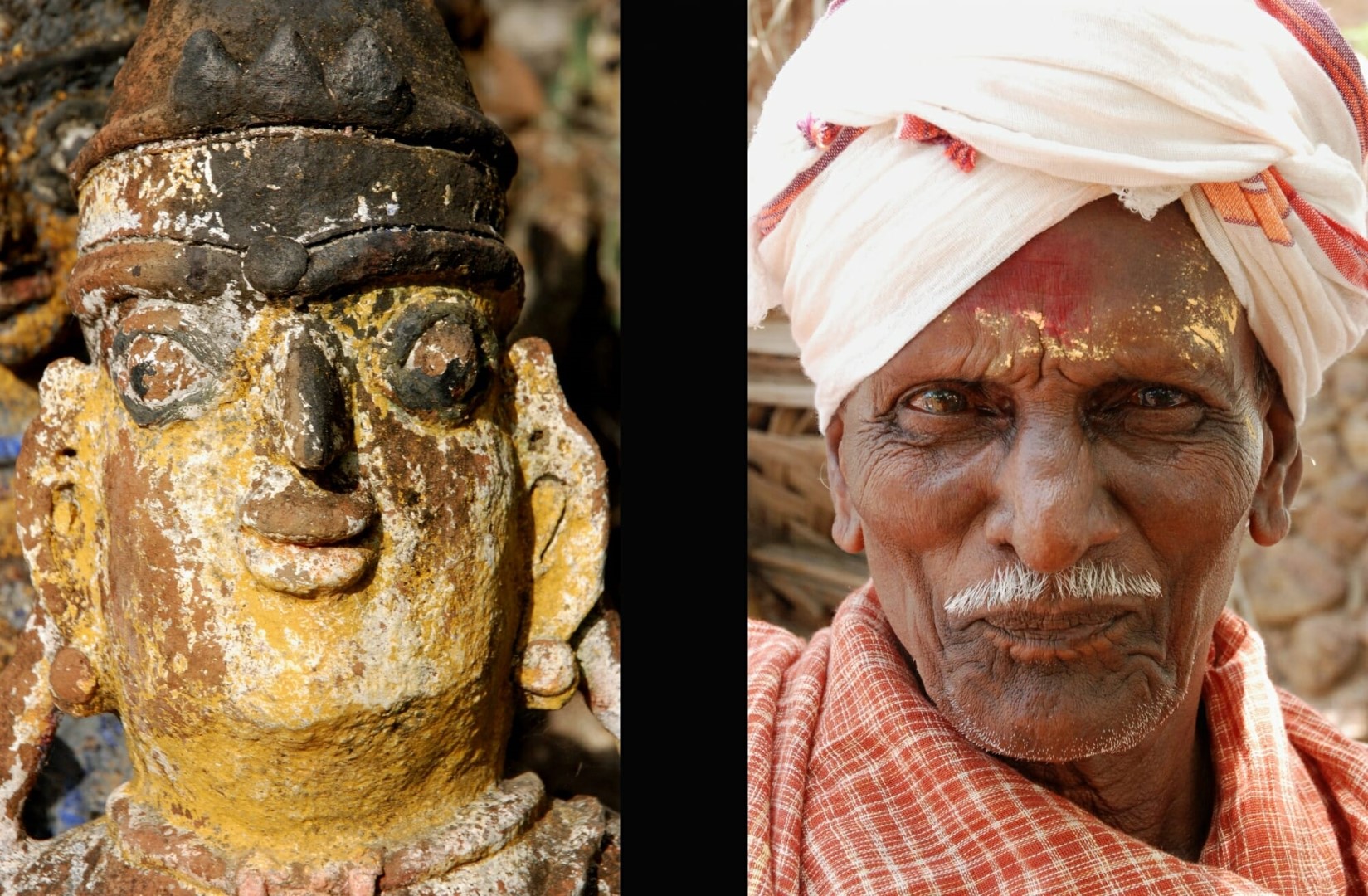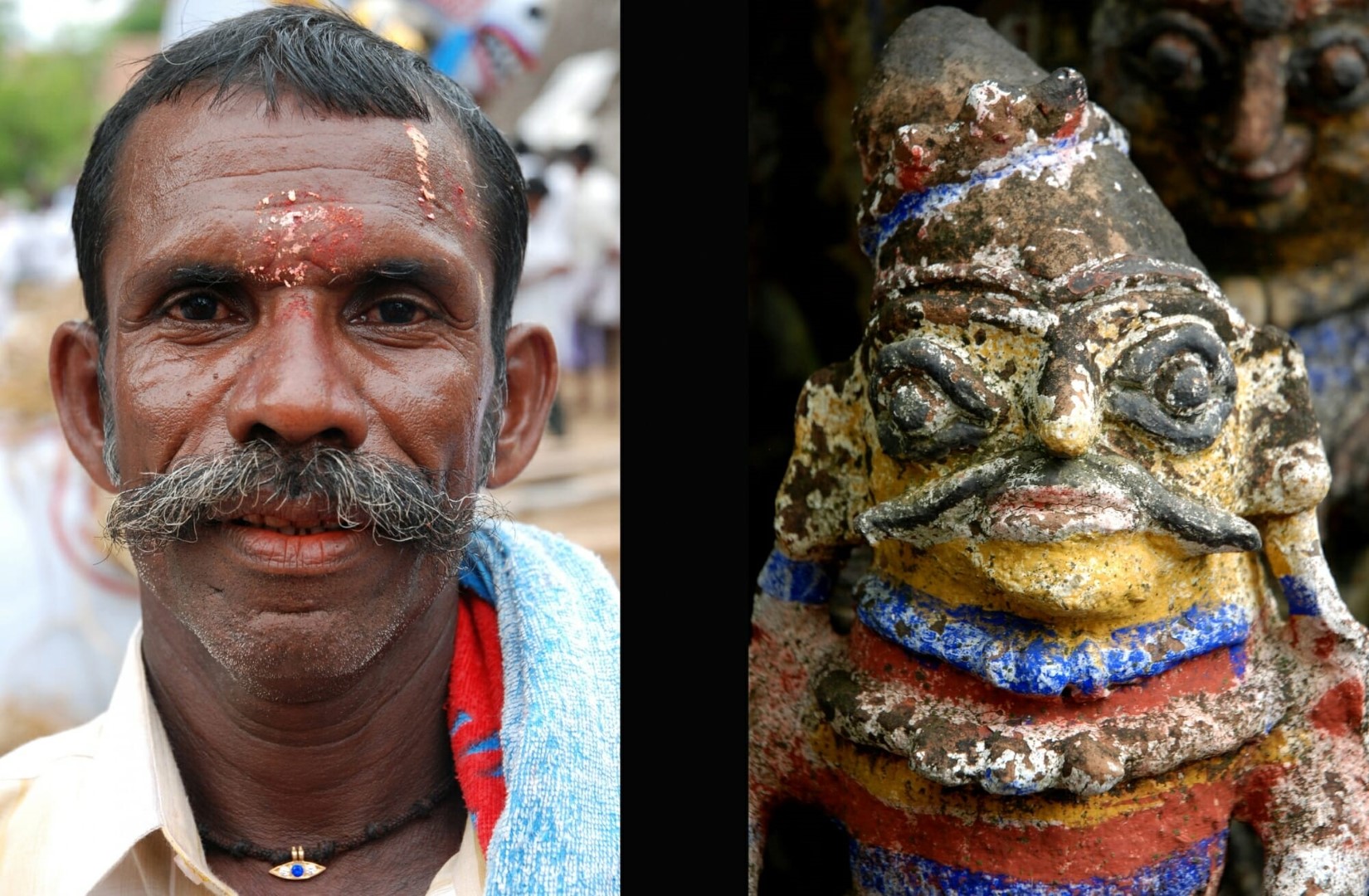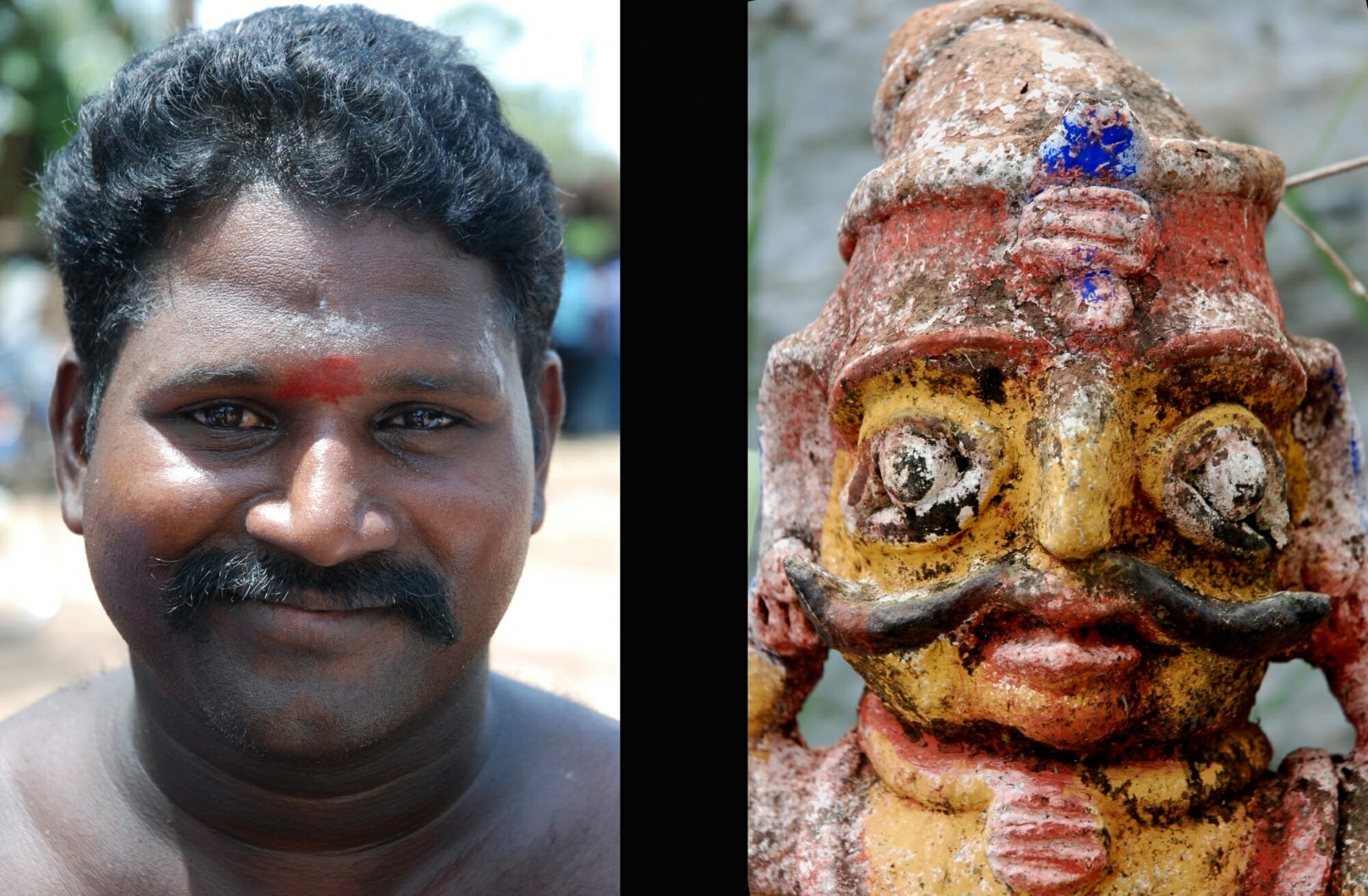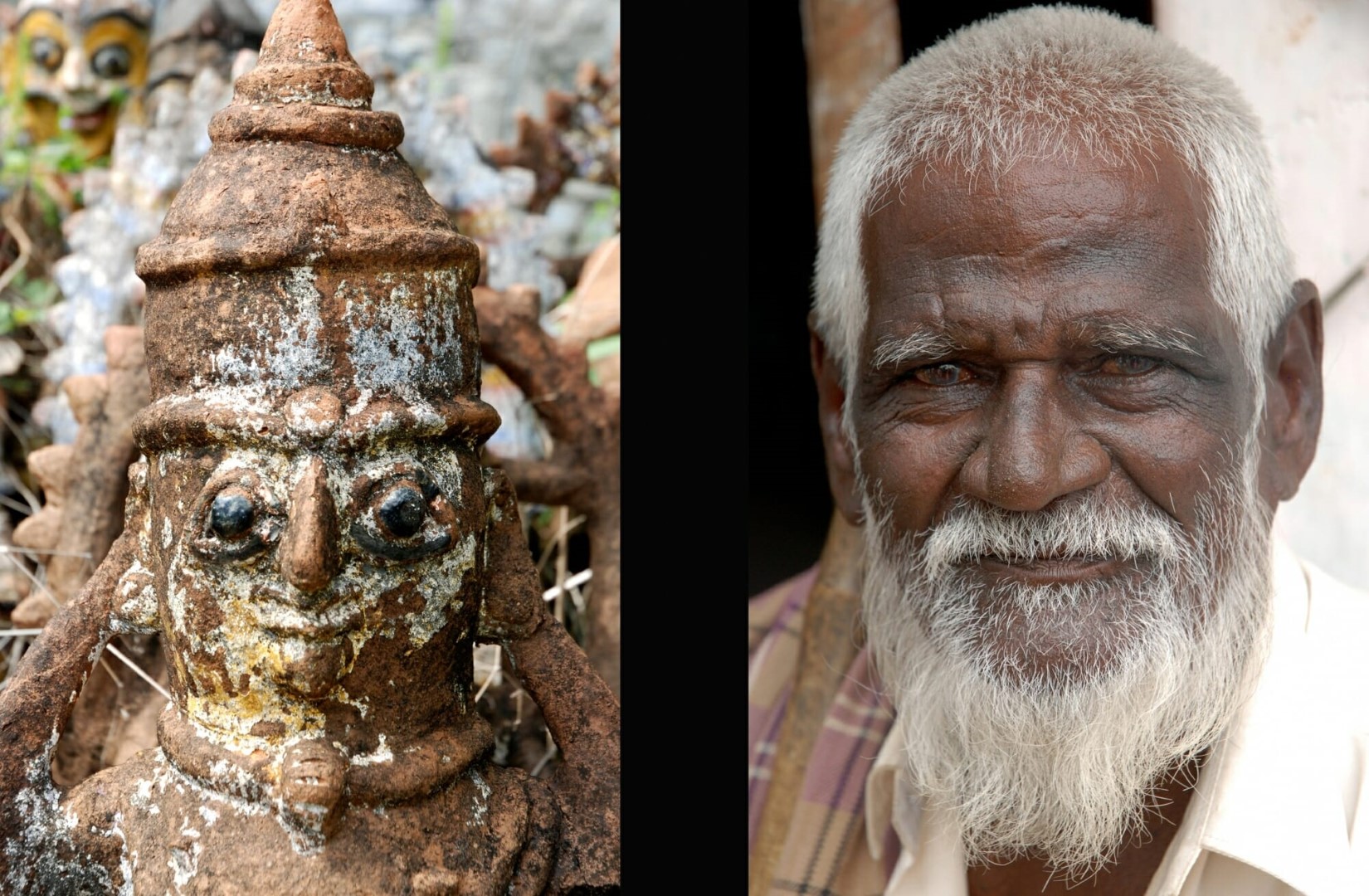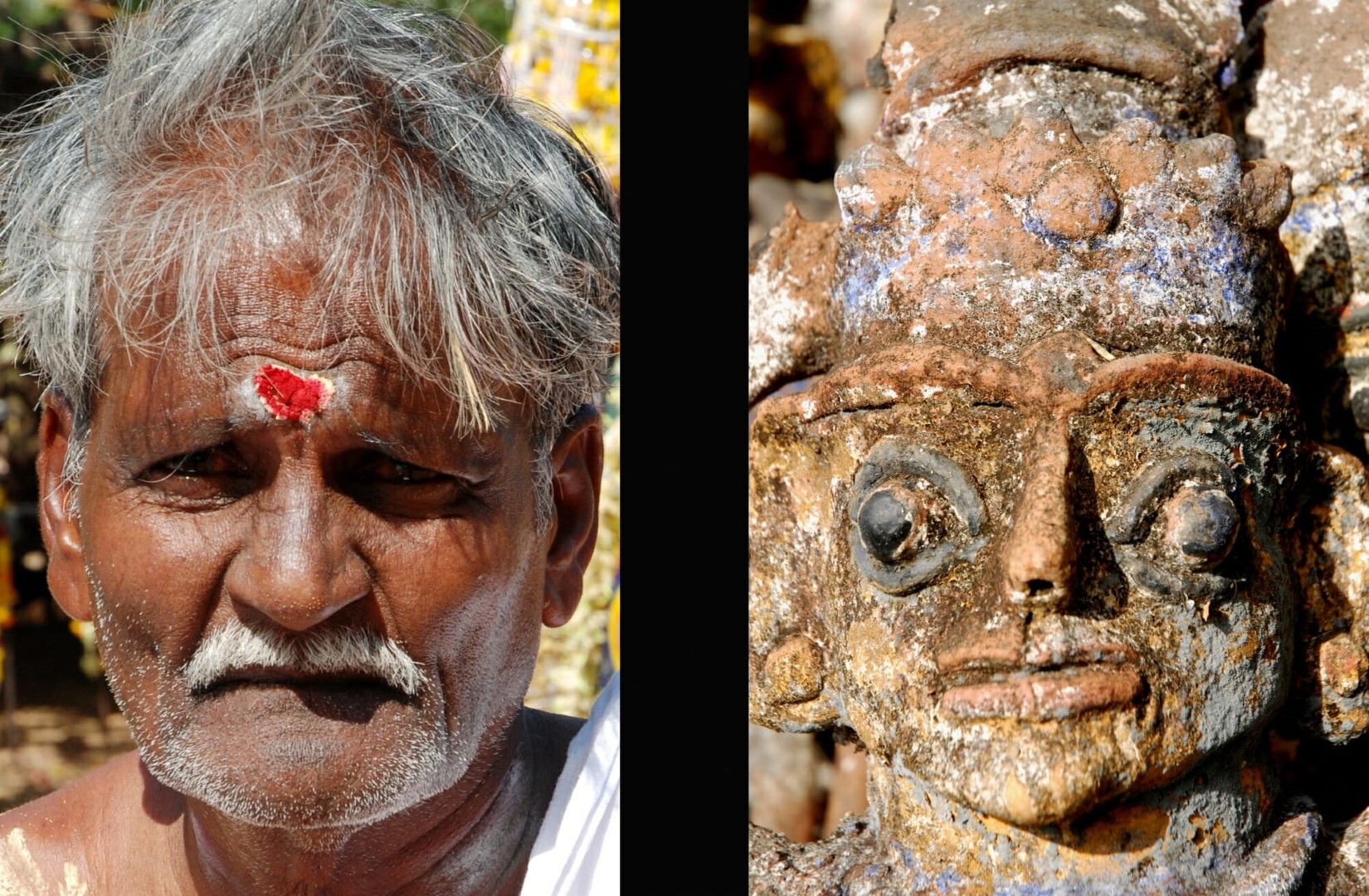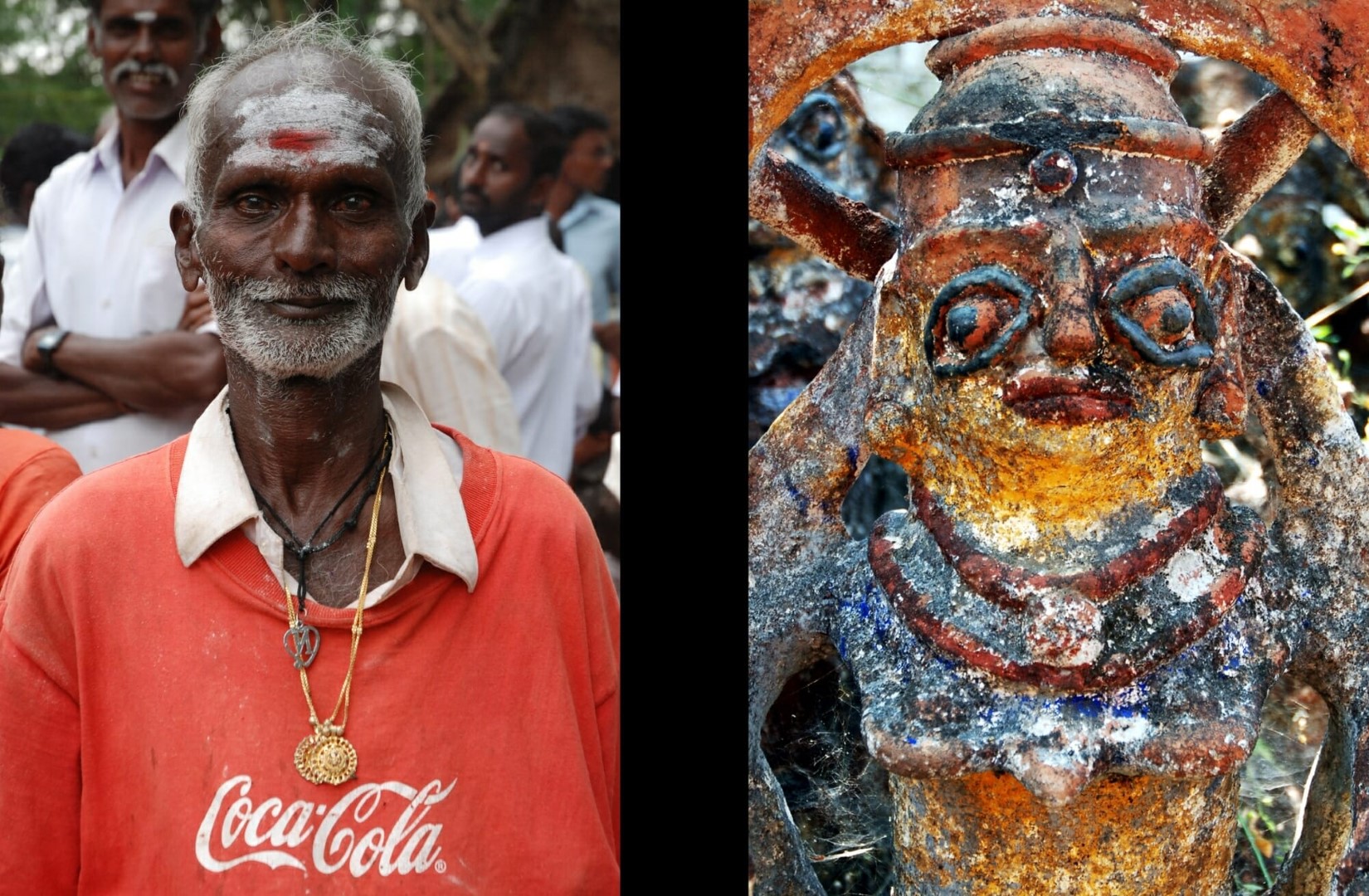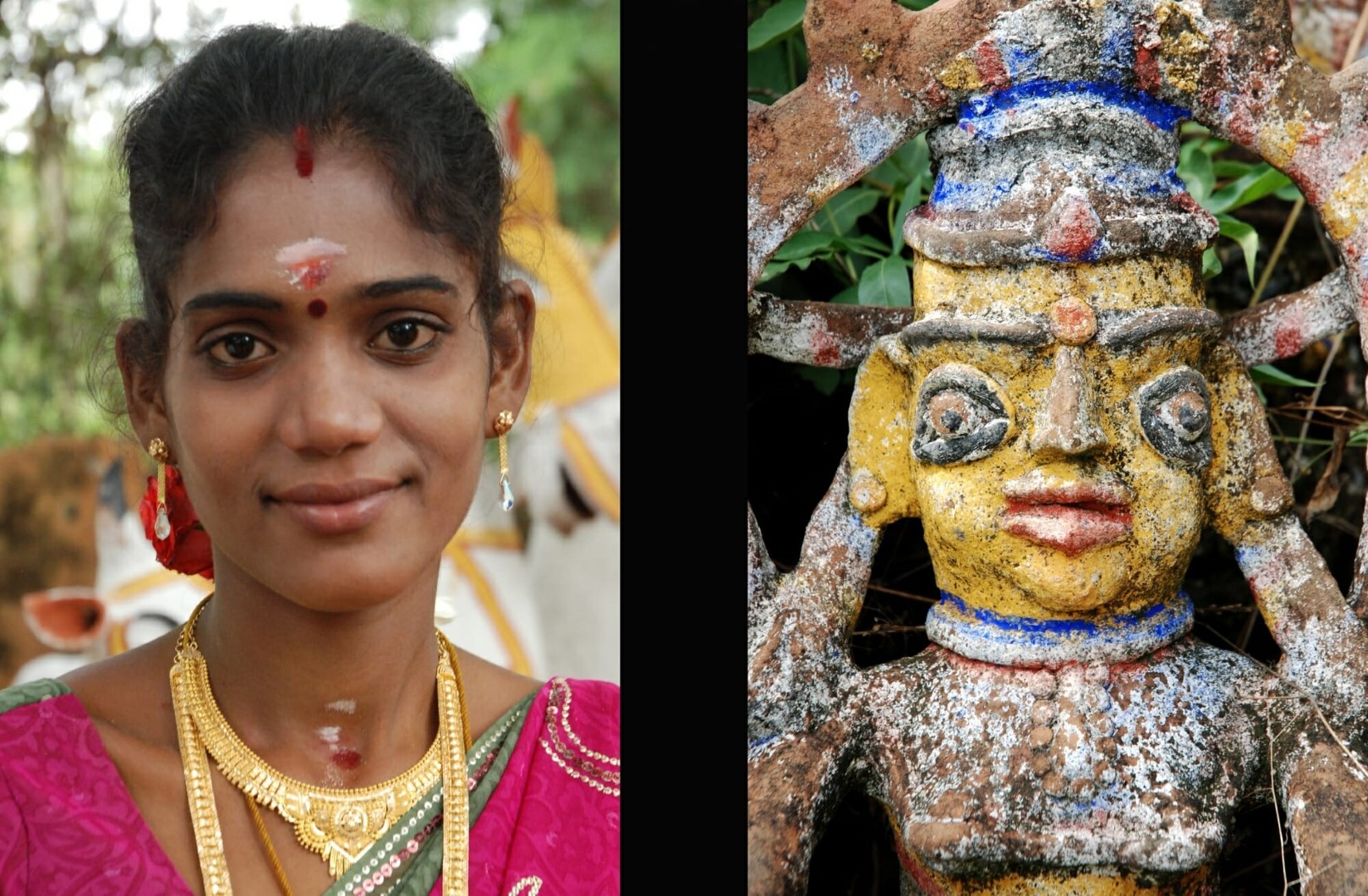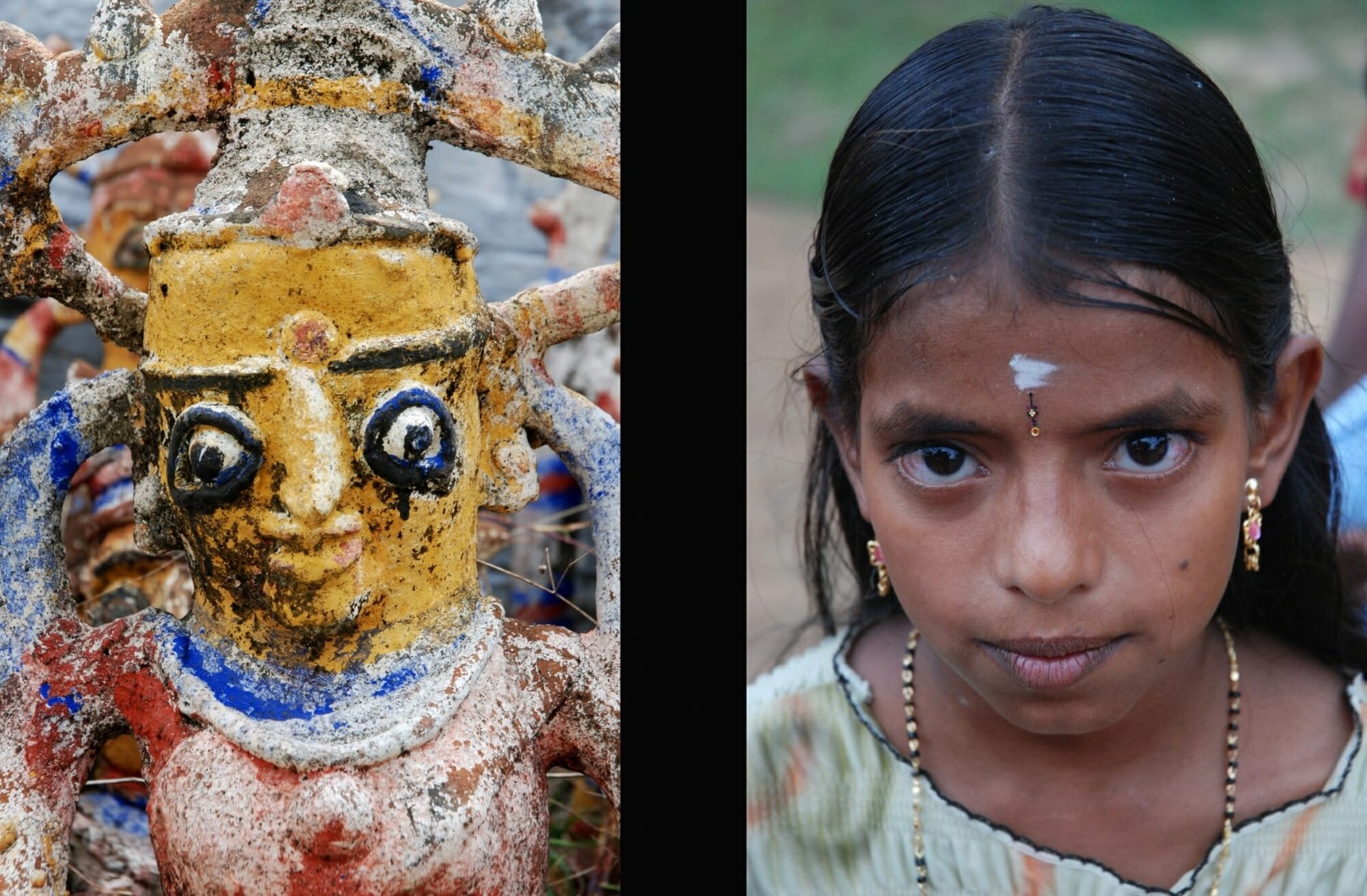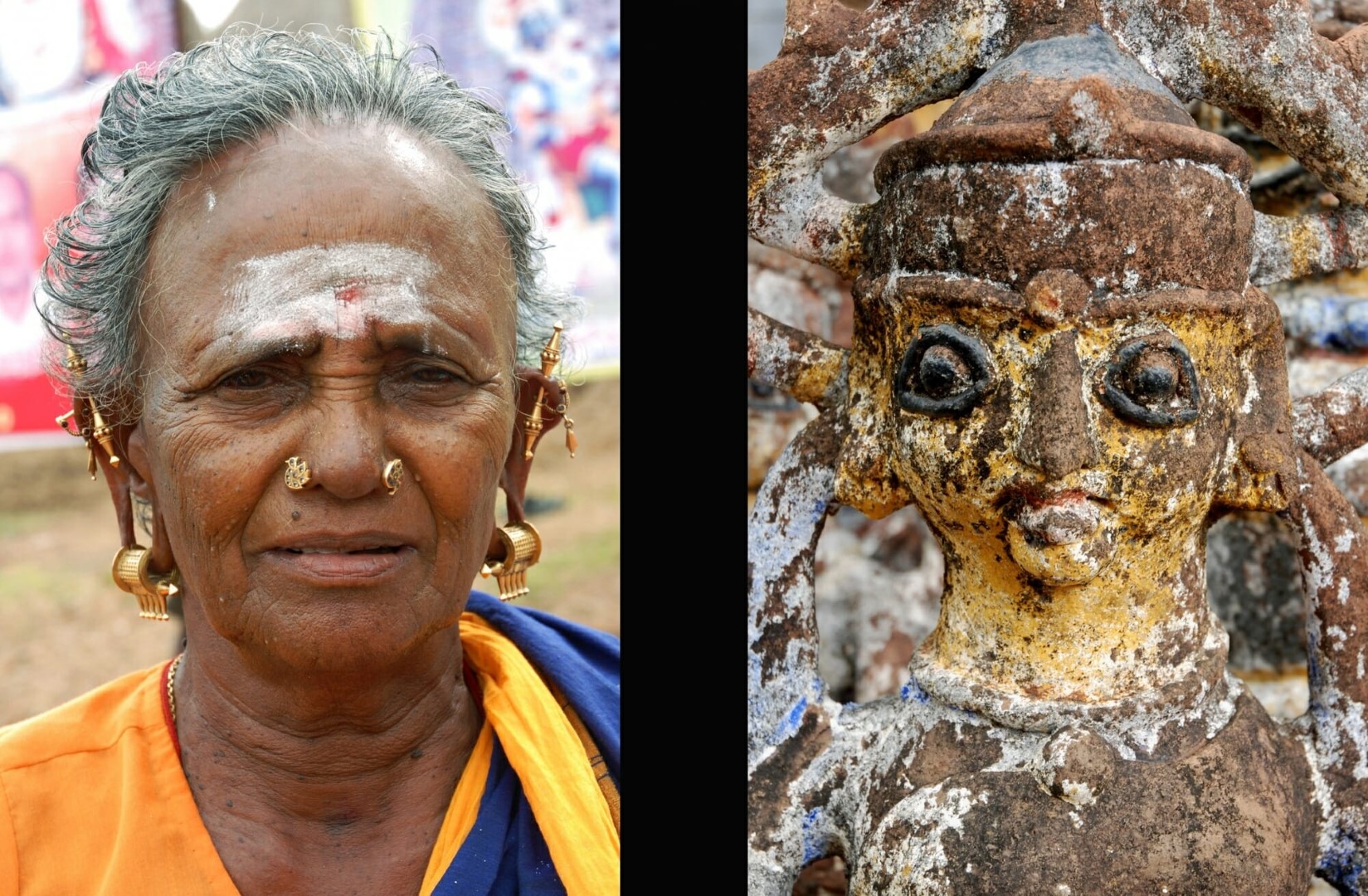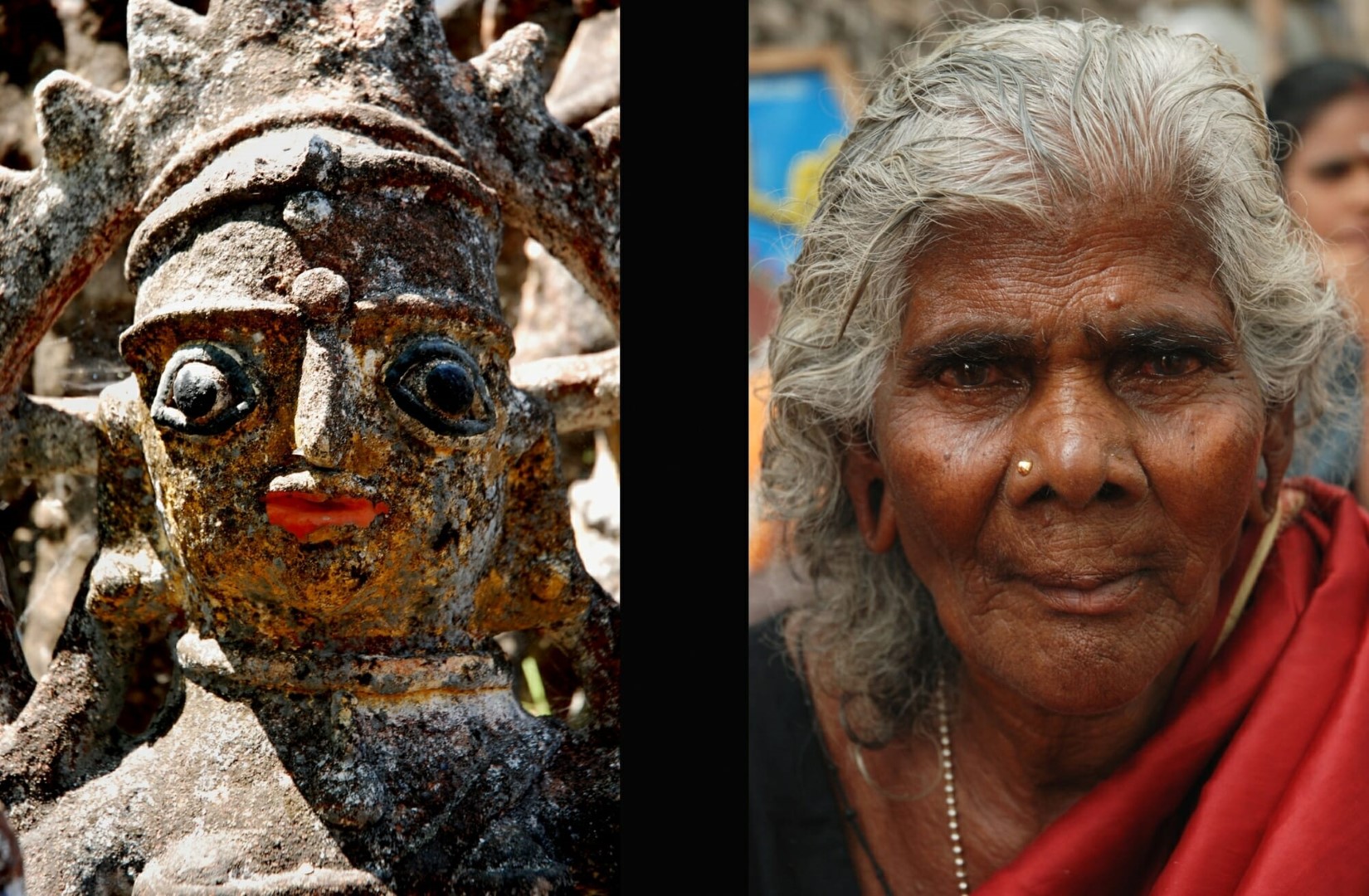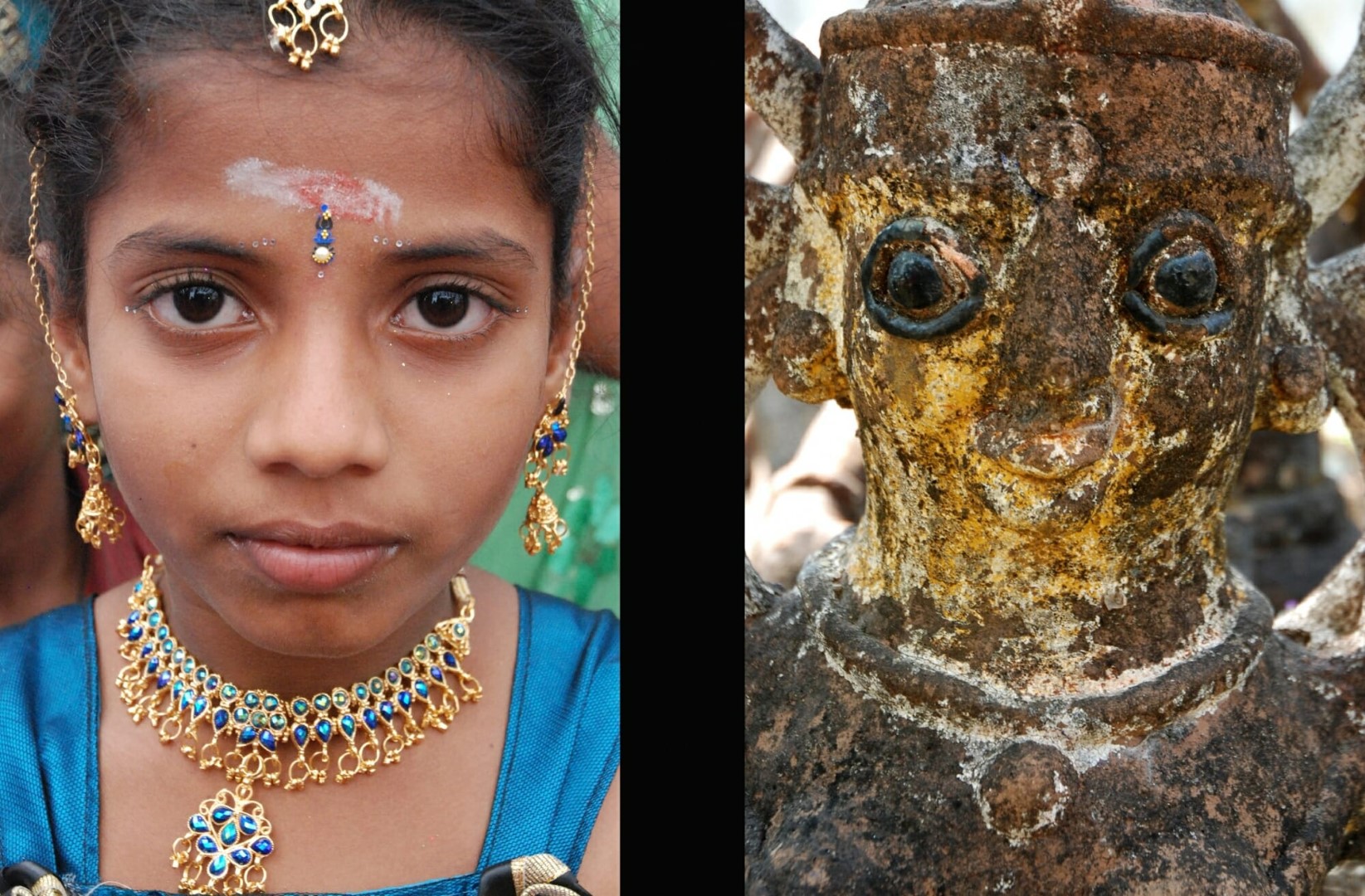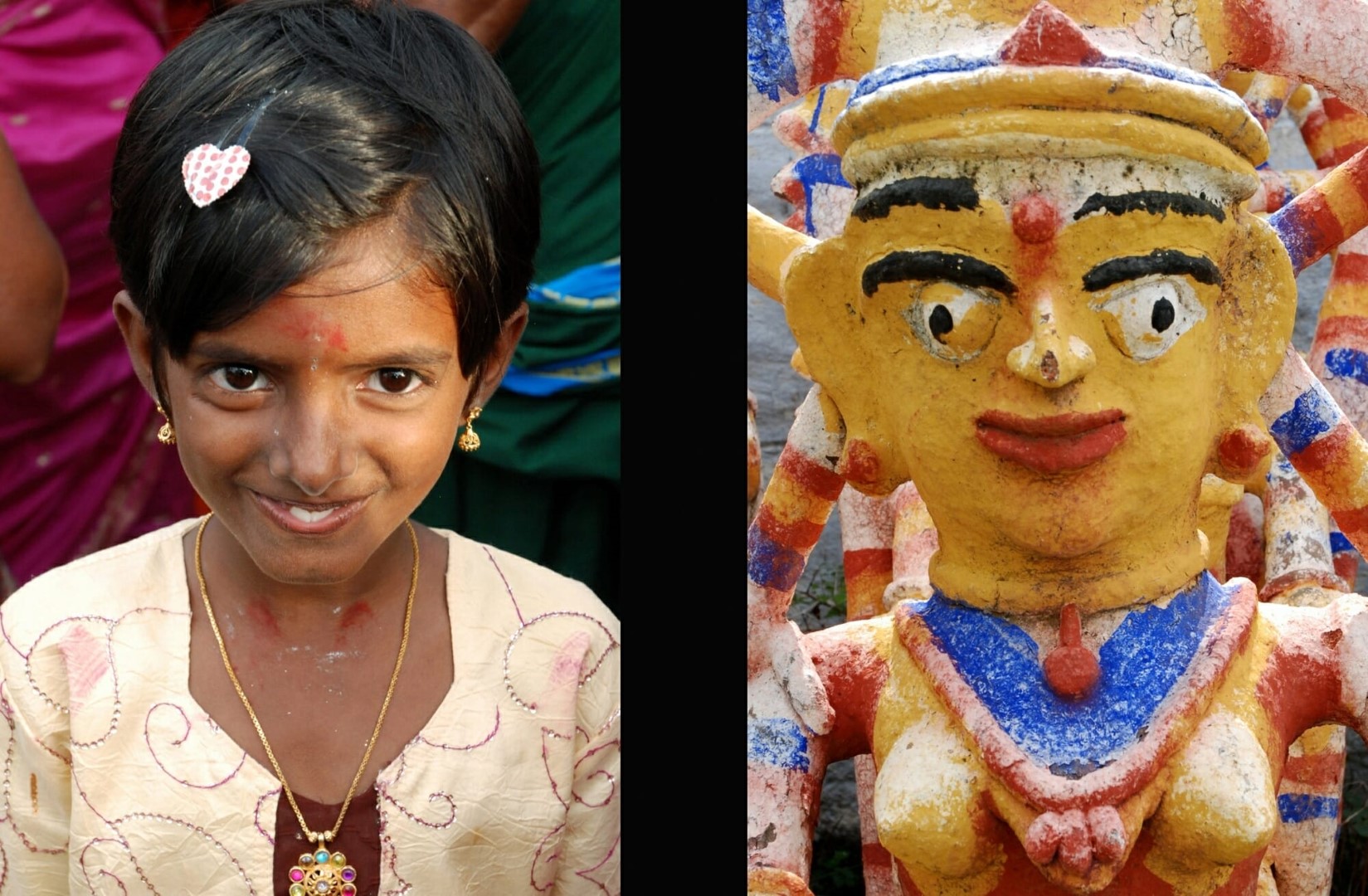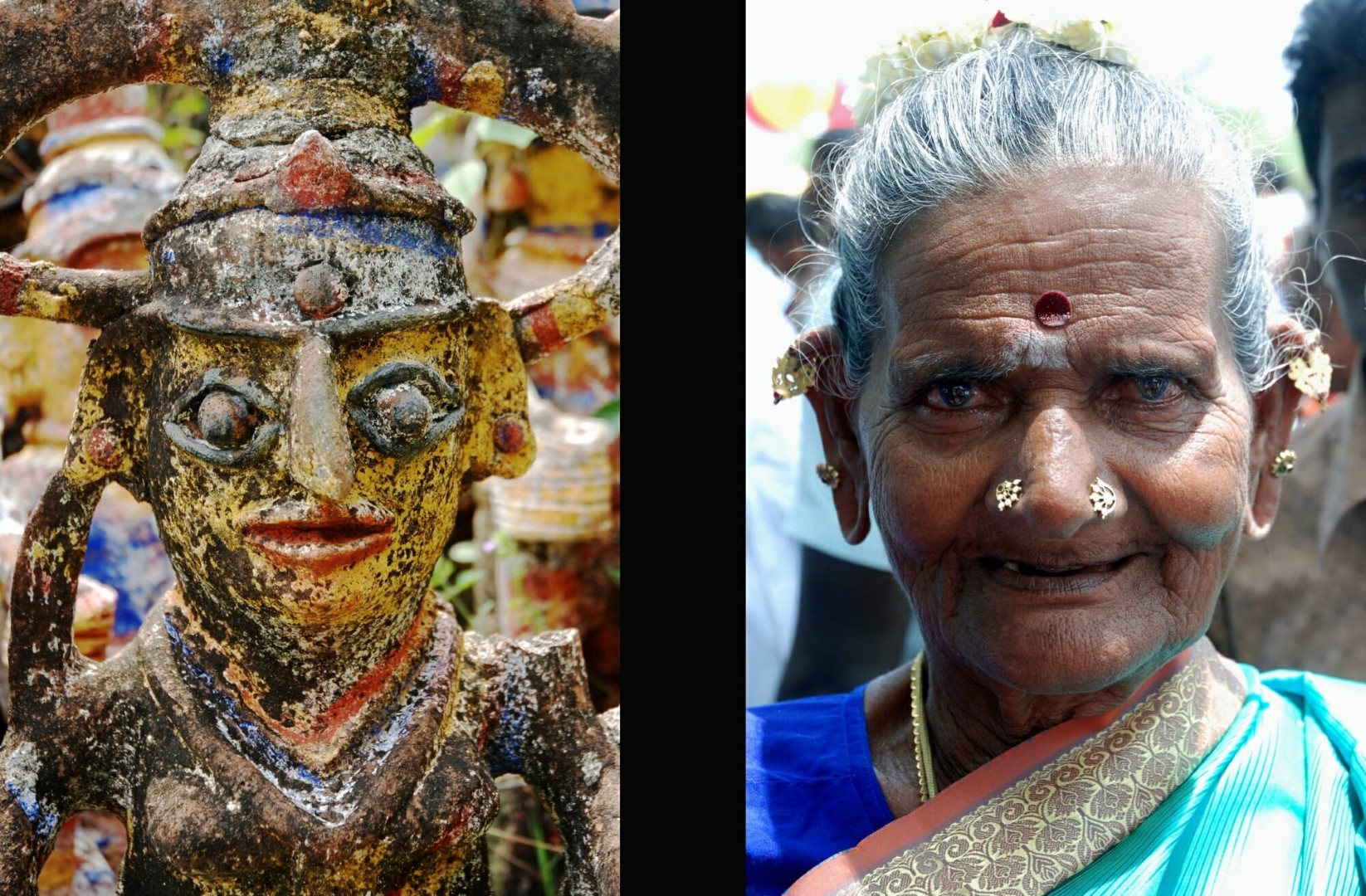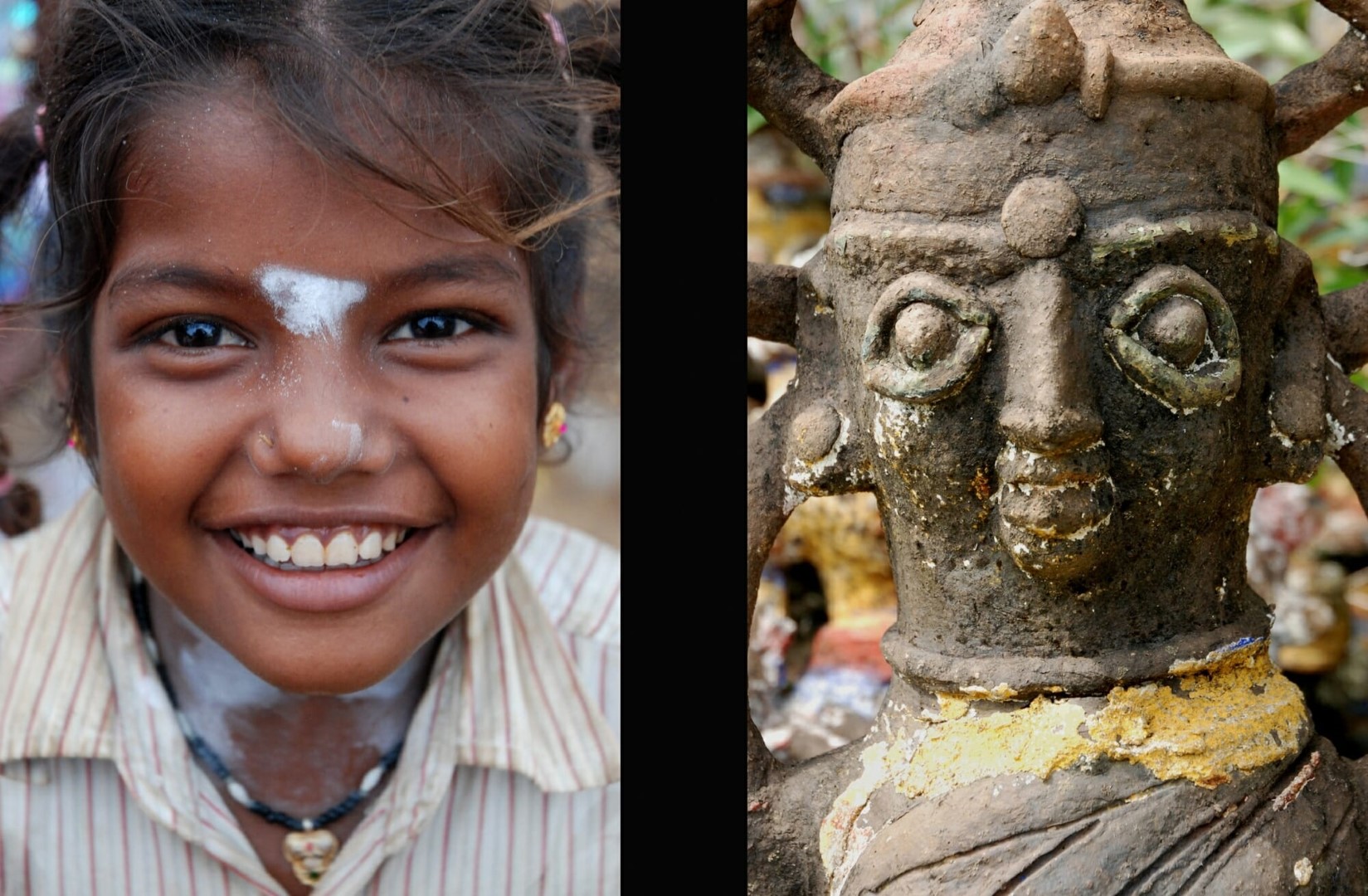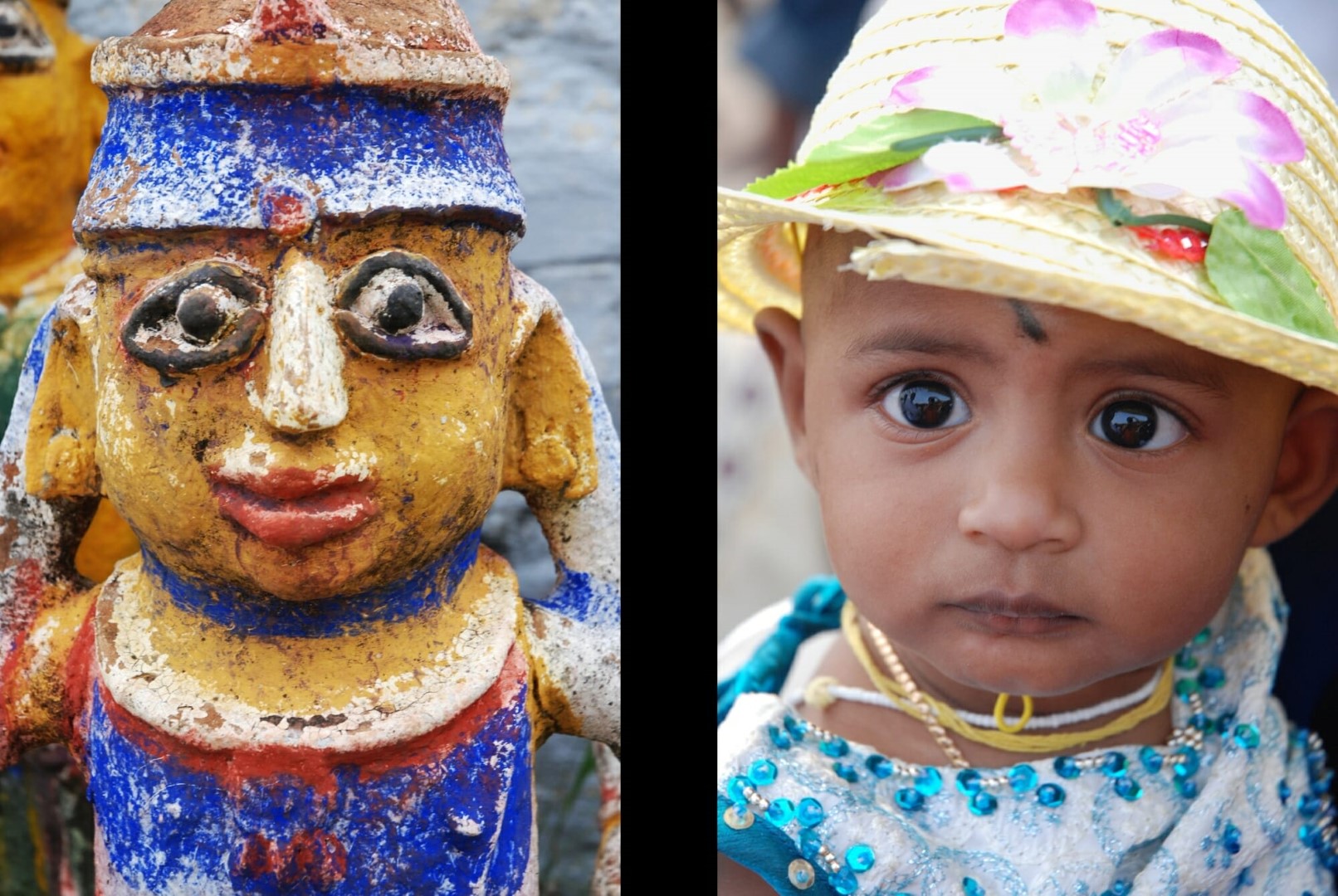For the past twenty years or so I’ve worked primarily in South India. Ten of those years were devoted to documenting the multiple facets of a little-known cult devoted to the supreme Tamil village protector, Lord Ayyanar (see “From Earth to Earth”). For outsiders, the main characteristic of Ayyanar are his outdoor shrines where the terracotta statues offered to him during annual festivals are placed and live out their lives under the intense sun and the monsoon rains: rows and clusters of life-sized horses and cows, small human-like figures, dogs, snakes, elephants and shrine-specific representations of demigods in Ayyanar’s pantheon see their numbers grow year after year, even as the older offerings slowly but surely deteriorate, decay and die.
Each shrine is unique, just as each offering is one of a kind, for made entirely by hand by potters who hold the hereditary and sacred charge for their creation.
In the atypical shrine in Kumbur, the twenty annual horse offerings are greatly outnumbered by scores of sami (gods) who are gifted to Ayyanar to help him ward off danger from evil malefactors, thereby assuring peace and prosperity to the villagers. Upon making portraits of some of these clay figures, I was struck by their resemblance to the flesh-and-blood villagers who venerate the great god and whose portraits I made at one festival or another.
How marvelous it is that devotees create gods in their own image who in turn create devotees in their own image…
or is it the other way around? In other words, and to borrow the simple childhood question “what came first, the chicken or the egg?”
